|
Centrip Editorial Board
Takayama & Shirakawa-go: A Road Trip to Explore Japan's History and Culture from Centrair

After arriving at Chubu Centrair International Airport, why not rent a car and enjoy a road trip where you can experience Japan's rich history and culture?
Join us as we go over a well-rounded model itinerary that takes you through two hotels from the Fairfield by Marriott Michi-no-Eki Project in Gifu Prefecture. The journey includes visits to the National Treasure Inuyama Castle, production areas of traditional Japanese crafts like Seki's blades and Mino washi paper, Gujo Hachiman the stage for the UNESCO Intangible Cultural Heritage-registered Gujo Odori, and the World Heritage sites of Shirakawa-go and Hida Takayama.
Day 1
National Treasure Inuyama Castle and a Stroll through Inuyama Castle Town
After renting a car at the airport, head toward your first destination, Inuyama. In Inuyama, you'll find the National Treasure Inuyama Castle, surrounded by a castle town where you can experience Japan's rich history. It takes about 1 hour and 20 minutes to drive from Centrair to Inuyama.
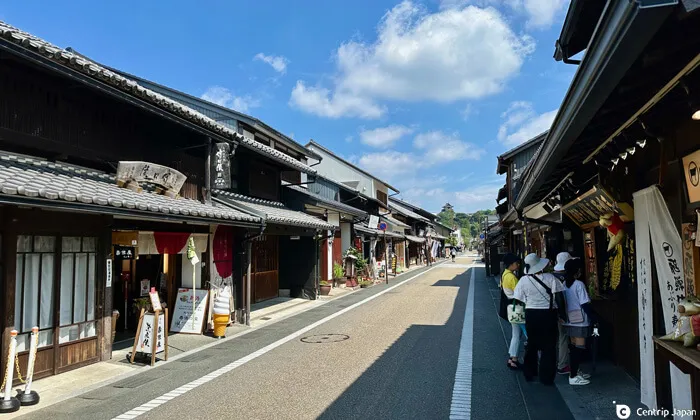 Inuyama Castle Town, experience authentic Japanese atmosphere
Inuyama Castle Town, experience authentic Japanese atmosphere
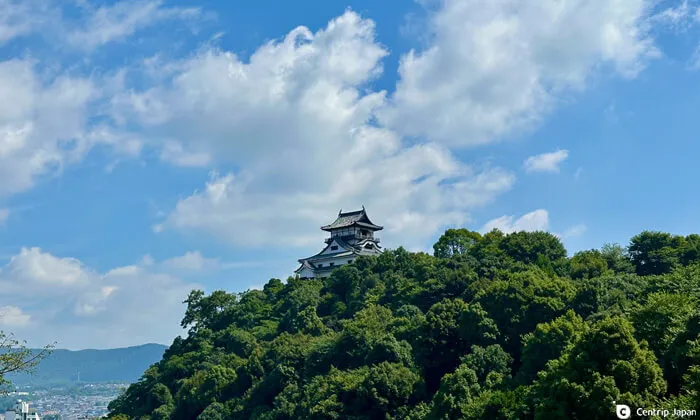 National Treasure Inuyama Castle, overlooking the surrounding area from its mountaintop perch
National Treasure Inuyama Castle, overlooking the surrounding area from its mountaintop perch
At the foot of Shiroyama, where the National Treasure Inuyama Castle stands, you'll find Sanko Inari Shrine, famous for its photogenic pink heart-shaped ema (votive plaques). Passing through the red torii gate of Sanko Inari Shrine and climbing the steep slope, Inuyama Castle gradually comes into view.
Built in the 16th century, Inuyama Castle is a rare and valuable structure, home to Japan’s oldest surviving wooden keep. It is one of only five castles designated as a National Treasure. From the top floor of the keep, which stands on a hill, you can enjoy a sweeping view of the Kiso River flowing below and the beautiful surrounding landscape.
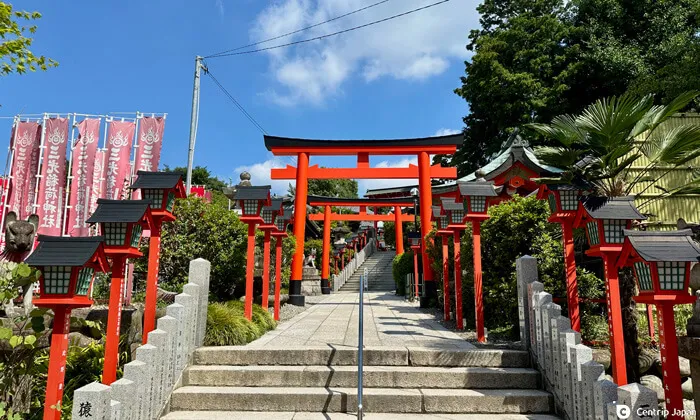 Pass through the torii gate of Sanko Inari Shrine on the way to Inuyama Castle
Pass through the torii gate of Sanko Inari Shrine on the way to Inuyama Castle
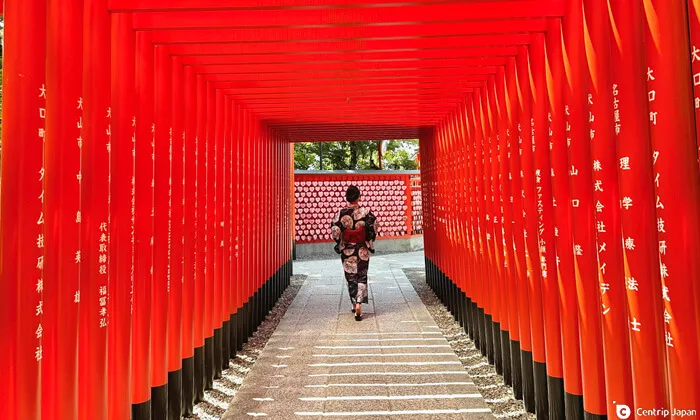 A popular photo spot with vibrant red torii gates and photogenic pink heart-shaped ema
A popular photo spot with vibrant red torii gates and photogenic pink heart-shaped ema
The castle town is filled with buildings that exude a traditional Japanese atmosphere, and it is always bustling with tourists enjoying food such as gohei mochi, grilled sweetfish, and various sweets while strolling around.
There are many charming restaurants, such as the Japanese café Honmachi Saryo, located on the main street of the castle town in a renovated traditional house. Their 'Colorful Dengaku Set Meal' is a popular lunch staple.
 Honmachi Saryo, a popular lunch spot
Honmachi Saryo, a popular lunch spot
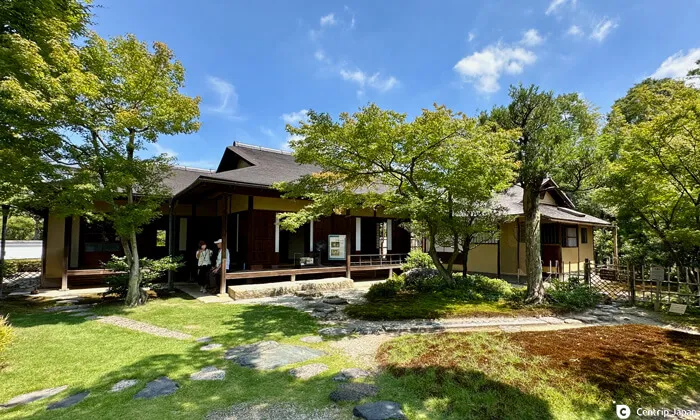 National Treasure Tea Room, Joan, within Urakuen
National Treasure Tea Room, Joan, within Urakuen
A 10-minute walk from Inuyama Castle takes you to the famous Japanese garden, Urakuen. Within the garden is the National Treasure tea room, Joan, built by the renowned tea master Oda Urakusai. It is an invaluable relic in the context of Japanese tea culture. There is also a facility where you can enjoy matcha and traditional sweets while taking in the beautiful garden scenery.
Cutler Sansyu / Seki Hamono Museum
About a 30-minute drive from Inuyama, the next destination is Seki City in Gifu Prefecture, known as the City of Blades.
Seki has an 800-year history of knife-making. Swordsmiths who had fled the various conflicts across Japan settled here, producing numerous famous swords renowned for their durability, sharpness, and resistance to bending. If you are interested in Japan's samurai culture, this is a place you must visit at least once.
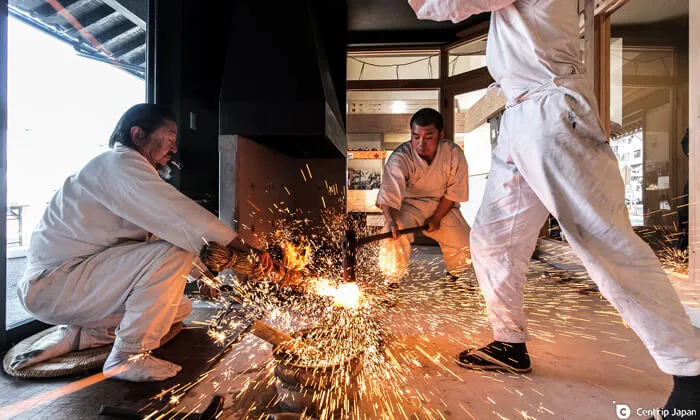 You can watch live demonstrations of swordsmithing and forging by skilled craftsmen.
You can watch live demonstrations of swordsmithing and forging by skilled craftsmen.
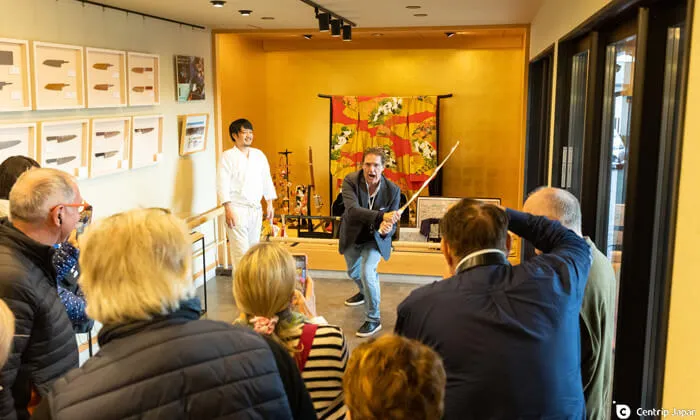 Take commemorative photos dressed as a samurai
Take commemorative photos dressed as a samurai
The Cutler Sansyu / Seki Hamono Museum—an experiential facility operated by a long-established knife shop Cutler Sansyu—offers opportunities to observe live forging demonstrations by swordsmiths or even try your hand at authentic forging (reservations are required for the experience).
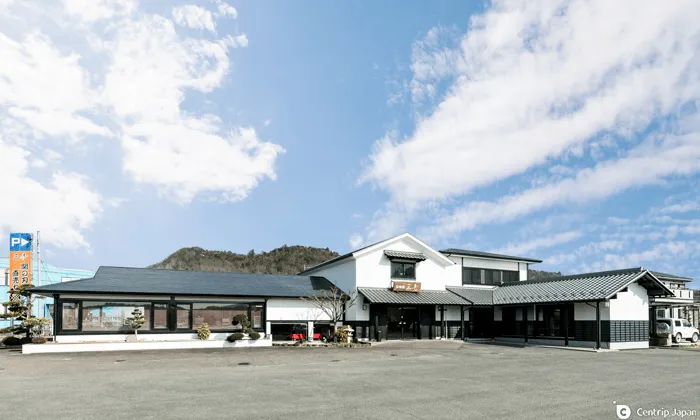 The exterior of Cutler Sansyu / Seki Hamono Museum
The exterior of Cutler Sansyu / Seki Hamono Museum
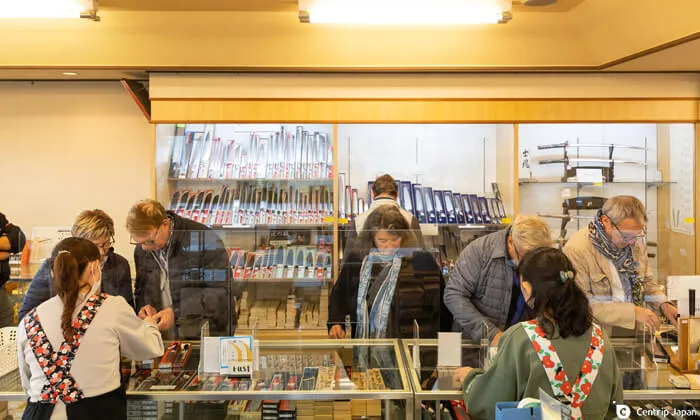 The shop offers a variety of cutlery for purchase
The shop offers a variety of cutlery for purchase
The techniques and spirit of craftsmanship behind Seki's knife-making are still passed down through generations. In addition to essential Japanese kitchen knives, a wide range of blades, including knives, scissors, and medical instruments, are produced, making Seki a world-renowned hub for cutlery. Be sure to find your favorite piece at the shop.
Fairfield by Marriott Gifu Mino
About a 20-minute drive from the Seki Hamono Museum, you’ll check in to your Day 1 accommodation, Fairfield by Marriott Gifu Mino.
The hotels in the Fairfield by Marriott Michi-no-Eki Project are conveniently located near roadside stations, offering easy access by car. They are ideal for enjoying a road trip while effectively exploring tourist destinations across Japan. While the hotels do not have on-site restaurants, you can deepen your local experience by dining at nearby restaurants or using the facilities at the roadside stations.
For dinner on this day, we recommend New Yanagiya Shokudo, a popular teppanyaki restaurant where the chef grills right in front of you. Be sure to enjoy the local flavors loved by the locals.
 Guest Rooms at Fairfield by Marriott Gifu Mino
Guest Rooms at Fairfield by Marriott Gifu Mino
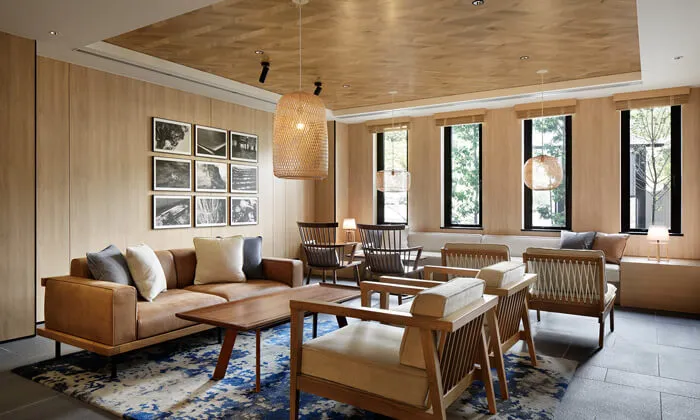 Lobby lounge
Lobby lounge
Day 2
Mino Washi and the Scenic Udatsu-no-Agaru Street
Gifu Prefecture’s Mino City, where Fairfield by Marriott Gifu Mino is located, is known for its 1,300-year history of washi paper production. Among the Mino washi made in this town, the traditional hand-crafted Hon Mino Gami, made from carefully selected materials, is recognized as a UNESCO Intangible Cultural Heritage and is used when restoring national-treasure cultural assets.
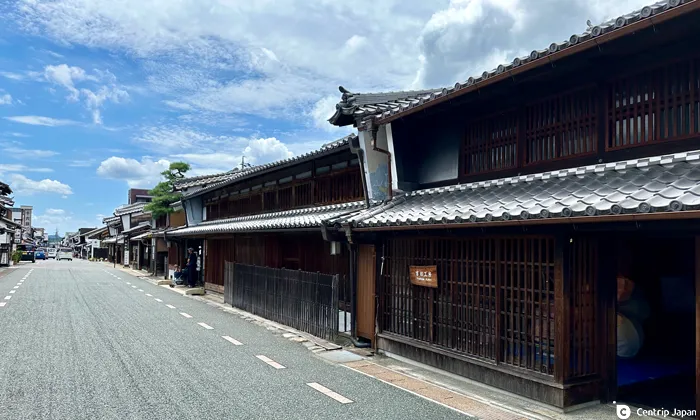 Rows of grand mansions built by Mino washi merchants, with udatsu (eaves extensions) rising above
Rows of grand mansions built by Mino washi merchants, with udatsu (eaves extensions) rising above
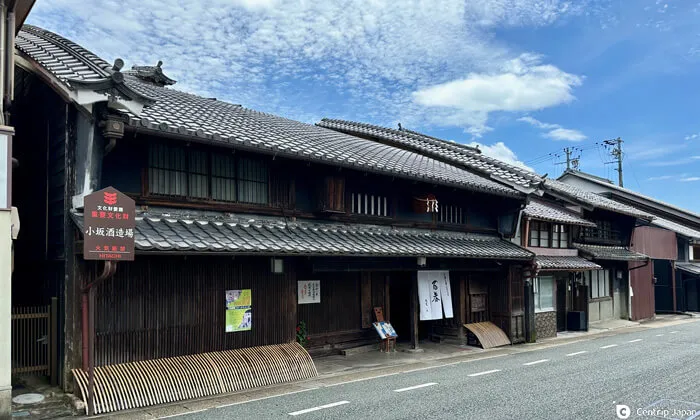 Along with sake breweries and wagashi (Japanese sweets) shops, many stores sell traditional crafts
Along with sake breweries and wagashi (Japanese sweets) shops, many stores sell traditional crafts
About a 5-minute drive from the hotel, you’ll find rows of grand mansions built by merchants who prospered through Mino washi production, forming the scenic streets of Udatsu-no-Agaru. The term udatsu refers to fireproof walls built at both ends of a roof to prevent the spread of fire. Due to their high construction costs, these walls became a symbol of wealth and success. The area offers a glimpse of Edo-period charm. There are also many shops and galleries featuring traditional crafts made from Mino washi, such as lanterns and Japanese umbrellas.

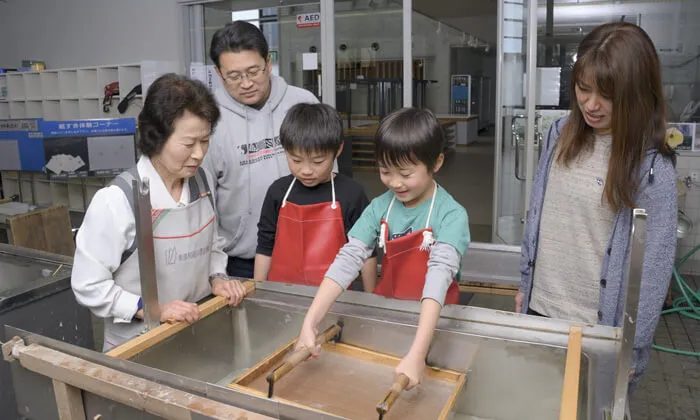
If your interest in Mino washi has been sparked, head to the Mino Washi no Sato Kaikan, located about a 10-minute drive from the Udatsu-no-Agaru district. This facility features various exhibitions on Mino washi, as well as live demonstrations and hands-on experiences of traditional paper-making (reservations are required for the experience). Why not create your own original washi as a memorable keepsake from your trip?
The Old Townscape of Gujo Hachiman
About a 30-minute drive from Mino, the next destination is Gujo Hachiman, known as the Little Kyoto of Oku-Mino.
True to its name, Gujo Hachiman is home to many temples and is also known as a water town, with beautiful waterways running throughout the town. In summer, the Gujo Odori, recognized as a UNESCO Intangible Cultural Heritage, is held on multiple nights, and the entire town becomes a lively dance venue.
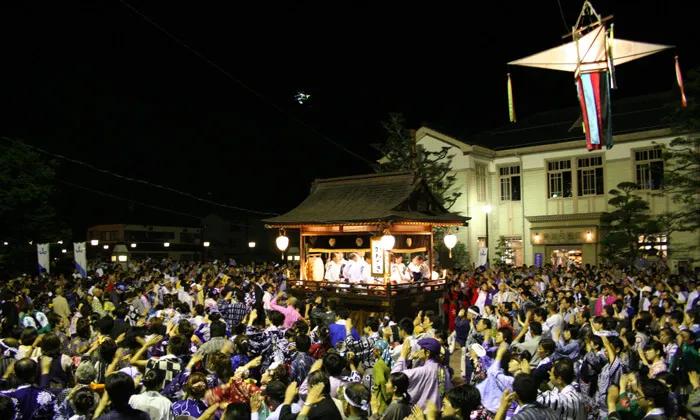 Gujo Odori is registered as a UNESCO Intangible Cultural Heritage
Gujo Odori is registered as a UNESCO Intangible Cultural Heritage
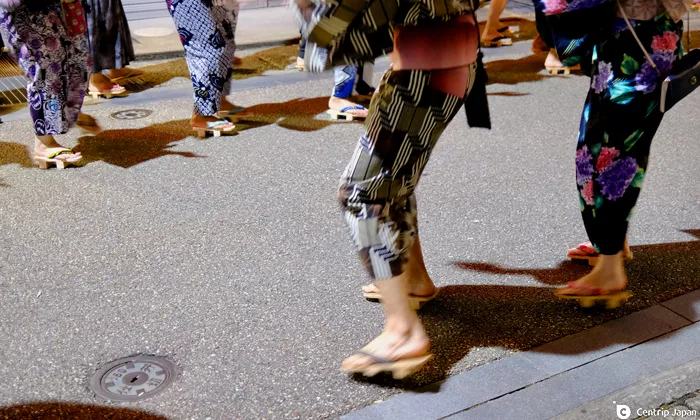 The highlight of the Gujo Odori is the all-night dance held over four consecutive nights in mid-August
The highlight of the Gujo Odori is the all-night dance held over four consecutive nights in mid-August
Gujo Hachiman is a small town, so after parking your car, it's recommended you go sightseeing on foot while taking in the beautiful townscape. If you'd like to casually experience the atmosphere of the Gujo Odori, stop by the Gujohachiman Hakurankan Museum. The museum, housed in the old tax office built over 100 years ago, hosts live demonstrations of the Gujo Odori.
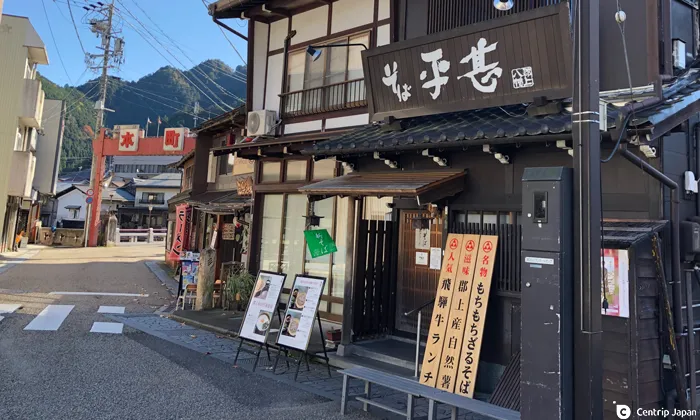 Gujo Hachiman's iconic long-established soba restaurant, Soba no Hirajin
Gujo Hachiman's iconic long-established soba restaurant, Soba no Hirajin
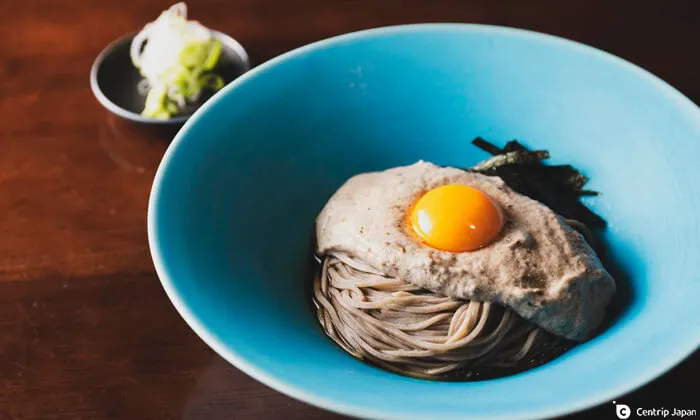 Soba is made with Gujo's famous local vegetable, yamaimo (Japanese mountain yam)
Soba is made with Gujo's famous local vegetable, yamaimo (Japanese mountain yam)
How about enjoying the local specialty soba for lunch in Gujo Hachiman? Soba no Hirajin, a long-established soba restaurant, is located very close to Sogi Spring, the first water source selected as one of Japan's "Top 100 Famous Waters" by the Ministry of the Environment. Their freshly made soba, made with Gujo's renowned water and domestically produced buckwheat flour, is a highlight. From the window seats, you can enjoy a view of the clear streams of the Yoshida River.
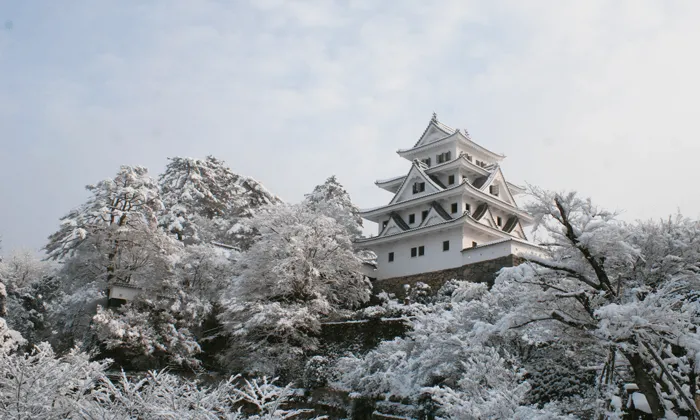 The ever-changing beauty of Gujo Hachiman Castle with the seasons
The ever-changing beauty of Gujo Hachiman Castle with the seasons
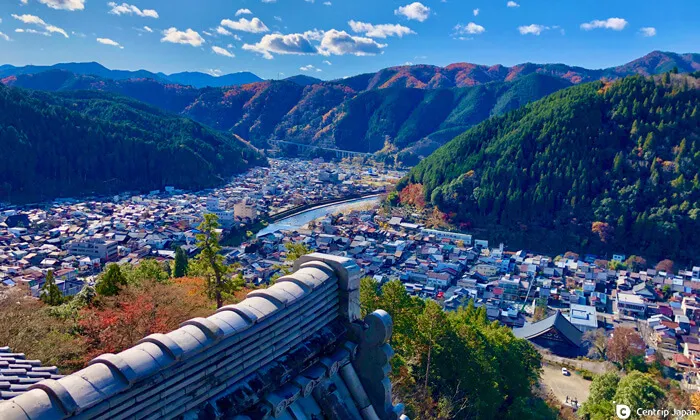 From the keep of Gujo Hachiman Castle, you can overlook the town of Gujo Hachiman
From the keep of Gujo Hachiman Castle, you can overlook the town of Gujo Hachiman
To conclude your visit to Gujo Hachiman, head to the town's symbol, Gujo Hachiman Castle. This famous castle is praised by the renowned novelist Ryotaro Shiba as "the most beautiful mountain castle in Japan," and from the castle keep, you can enjoy a panoramic view of Gujo Hachiman. In autumn, the entire castle hill turns a brilliant red, making it a popular spot for viewing fall foliage.
Fairfield by Marriott Gifu Takayama Shirakawa Go
The second night's accommodation, Fairfield by Marriott Gifu Takayama Shirakawa Go, is about a 40-minute drive from Gujo Hachiman and is located right near the Shokawa IC exit on the Tokai-Hokuriku Expressway.
Next to the hotel, you’ll find the Roadside Station Sakura no Sato Shokawa, and nearby is the natural hot spring, Sakura no Yu. After a long drive, soaking in the hot spring to unwind might be just what you need.For dinner, enjoy a meal at Oka, conveniently located within the same facility. Here, you can savor a variety of simple yet delicious local flavors, all prepared with premium Hida Takayama-grown Koshihikari rice.
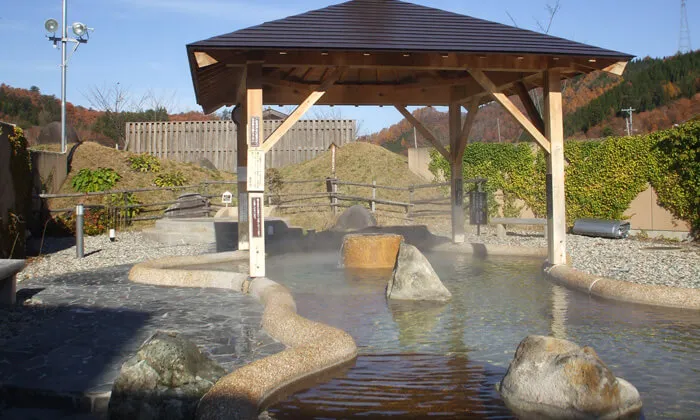 Open-air bath
Open-air bath
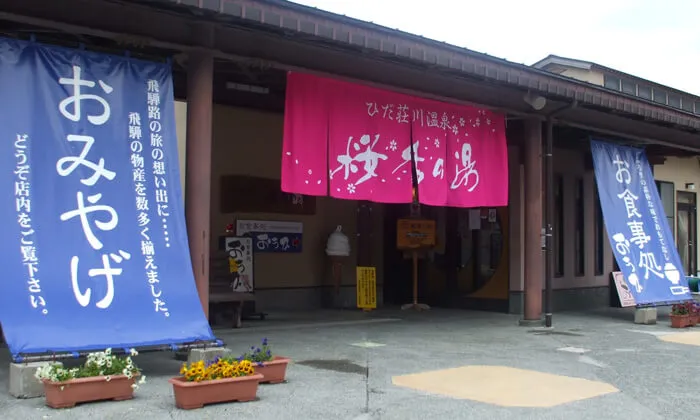 Kei-chan Grilled Chicken Set Meal
Kei-chan Grilled Chicken Set Meal
After returning to the hotel, it's also recommended to relax in the lobby lounge while listening to the sounds of insects.
 The lobby lounge at Fairfield by Marriott Gifu Takayama Shirakawa Go
The lobby lounge at Fairfield by Marriott Gifu Takayama Shirakawa Go
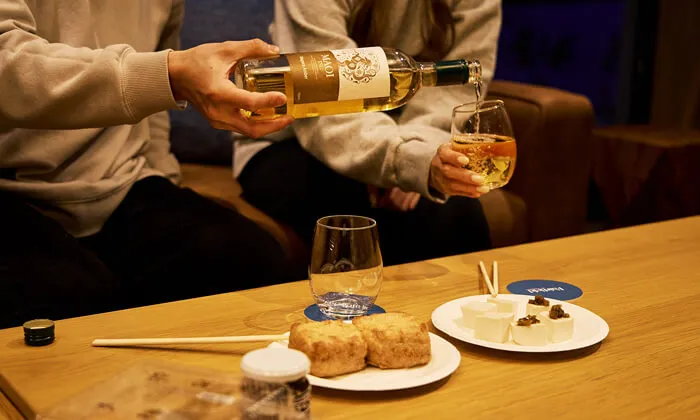 Relaxing in the lobby lounge is one of many highlights
Relaxing in the lobby lounge is one of many highlights
Day 3
World Heritage Site Shirakawa-go Gassho-zukuri Village
The first destination on the next day is the World Heritage Site Shirakawa-go, which is about a 40-minute drive from the hotel. Please note that cars are not permitted inside the village, you must park in designated areas and explore on foot.
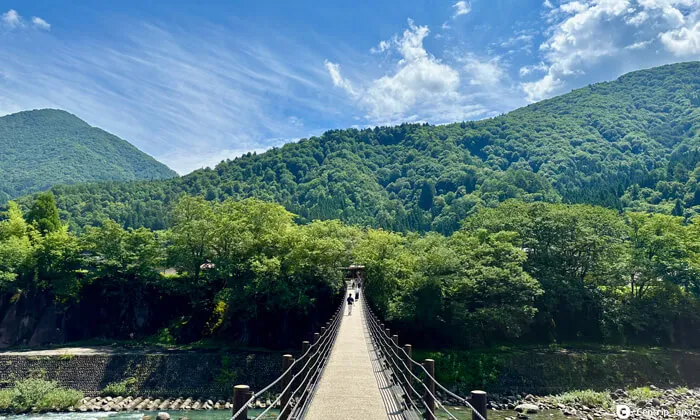 Crossing the suspension bridge over Shokawa River on the way to Shirakawa-go
Crossing the suspension bridge over Shokawa River on the way to Shirakawa-go
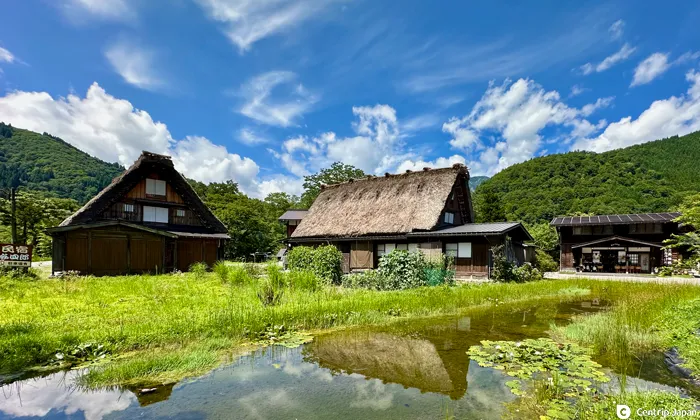 Stepping into Shirakawa-go feels like stepping back in time
Stepping into Shirakawa-go feels like stepping back in time
Shirakawa-go, a traditional Japanese rural village, is home to many gassho-zukuri-style houses, an architectural style unique to the region. The village offers beautiful seasonal landscapes, drawing visitors to its nostalgic atmosphere that evokes a sense of Japan's original scenery.
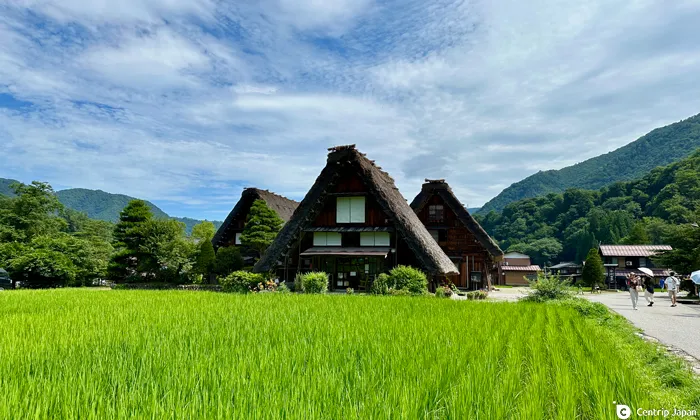 Shirakawa-go’s charm varies with the seasons
Shirakawa-go’s charm varies with the seasons
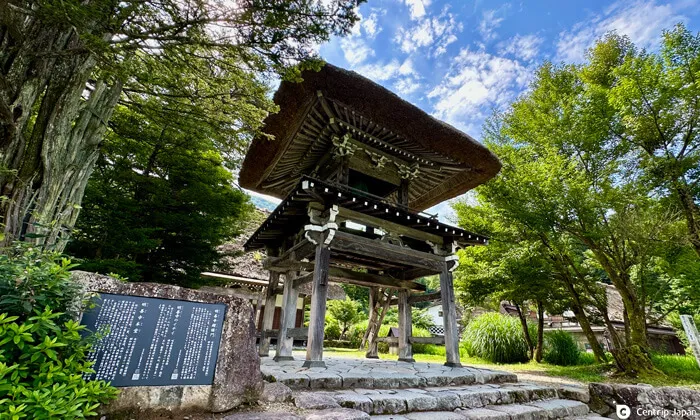 Myozen-ji Temple’s Bell Tower Gate
Myozen-ji Temple’s Bell Tower Gate
The atmosphere in the village is amazing, and simply walking along the narrow paths between the rice fields is exhilarating. Some of the gassho-zukuri houses are open for interior tours. For example, Wada House, the largest gassho-zukuri in Shirakawa-go and designated as an Important Cultural Property, is still used as a residence, but visitors can tour the first and second floors.
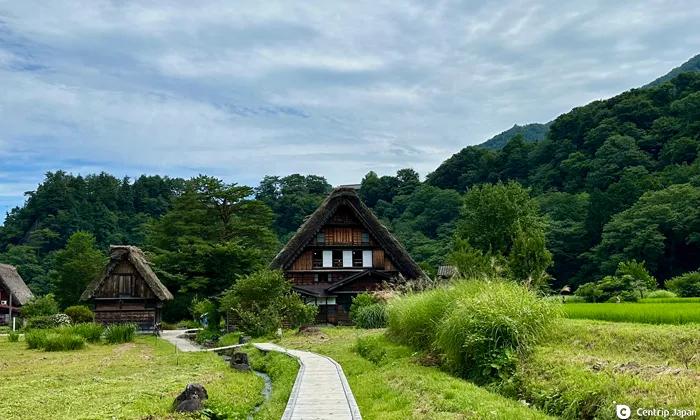 Wada House, a gassho-zukuri designated as an Important Cultural Property
Wada House, a gassho-zukuri designated as an Important Cultural Property
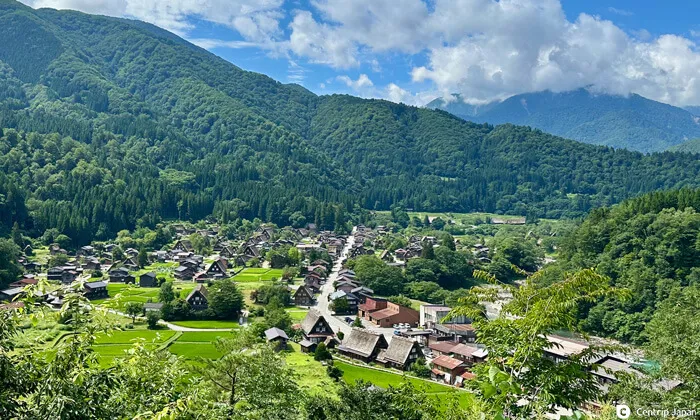 View of the village from the Shiroyama Castle Keep Observatory
View of the village from the Shiroyama Castle Keep Observatory
After walking around the village, head towards the Shiroyama Castle Keep Observatory located on a hill. The panoramic view of the village is postcard-perfect, and you can enjoy different shades of Shirakawa-go depending on the season. You can either hike up to the observatory from the village or take a paid shuttle bus.
*Driving to the observatory is prohibited.
Responsible Tourism in Shirakawa-go
Hida Takayama
After leaving Shirakawa-go, the next stop is Hida Takayama, which is about a 55-minute drive from Shirakawa-go.
Takayama is also known for its delicious local cuisine, including Hida beef, Takayama ramen, and quaint local cafes. Let’s start with lunch.
If you're looking for a lunch that captures the essence of Takayama, Hida Takayama Kyo-ya is highly recommended. At Kyo-ya, you can enjoy not only Hida beef but also regional specialties such as Hoba miso and pickled steak. The atmosphere of the old traditional house that has been relocated is charming, and friendly interactions with the owner and hostess will make your trip even more memorable.
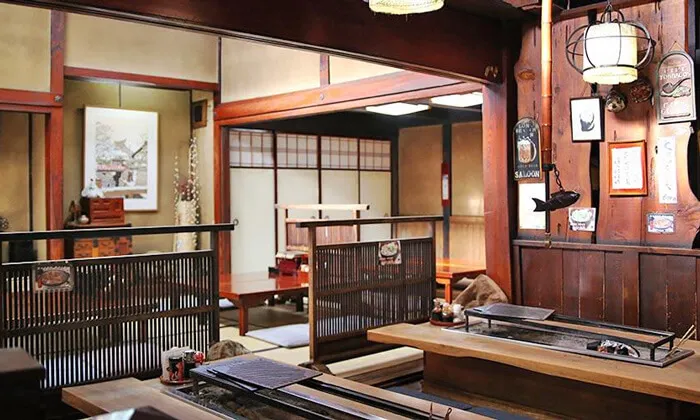 Kyo-ya, a relocated traditional Japanese house
Kyo-ya, a relocated traditional Japanese house
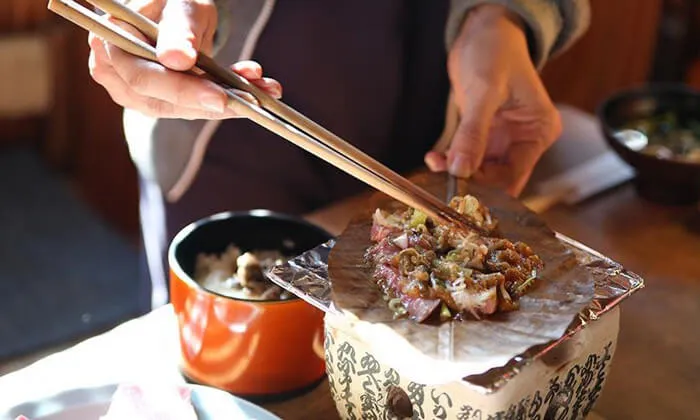 A variety of Takayama’s local dishes to enjoy
A variety of Takayama’s local dishes to enjoy
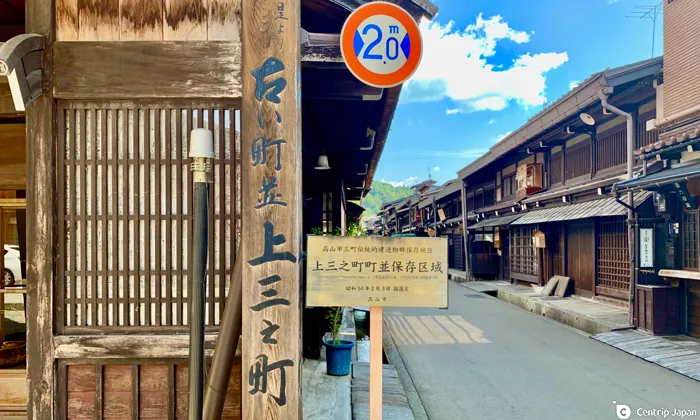 The famous old townscape of Kamisanno-machi
The famous old townscape of Kamisanno-machi
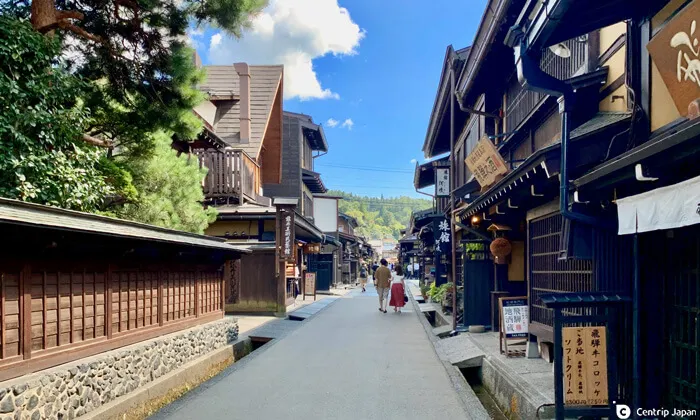 Bustling with many tourists
Bustling with many tourists
The charm of Takayama lies in its old town, which still retains its historic atmosphere. Sake breweries, souvenir shops, and restaurants line the streets, attracting many visitors. Other must-visit places include the Takayama Jinya, the center of political activities during the Edo period, and the morning markets held daily in front of the Jinya.
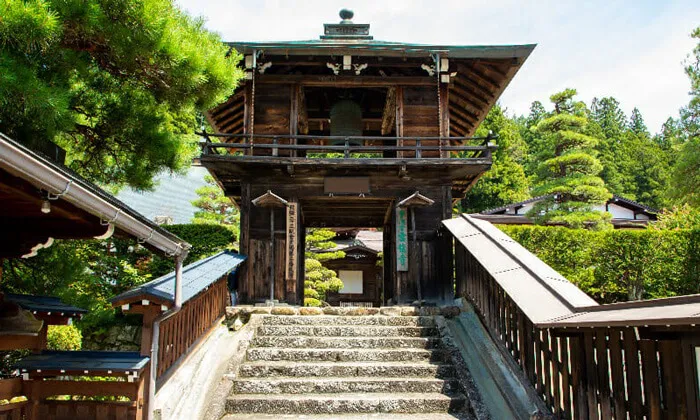 One of the temples on the Higashiyama Walking Path, the unique gate with a bell at Unryu-ji Temple
One of the temples on the Higashiyama Walking Path, the unique gate with a bell at Unryu-ji Temple
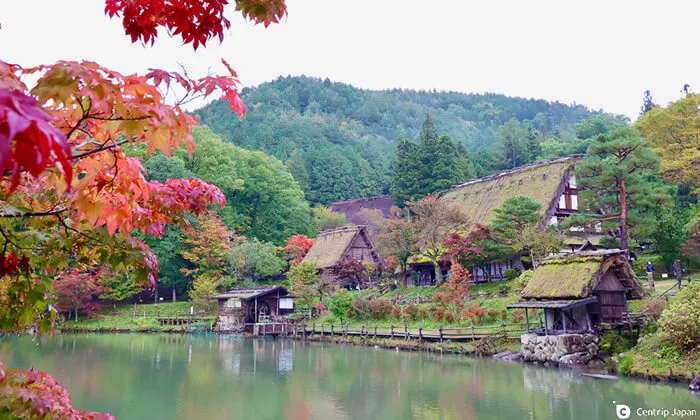 Hida no Sato offers a peaceful atmosphere to enjoy Japan’s traditional charm
Hida no Sato offers a peaceful atmosphere to enjoy Japan’s traditional charm
If you're looking for a quieter environment to experience traditional Japanese scenery, a stroll through Higashiyama Temple Town or a visit to Hida no Sato is recommended. Higashiyama Temple Town is located about a 10-minute walk from the old town and is situated on a hill with several temples scattered throughout. A walking path is available to visit these temples. Hida no Sato is an open-air museum that recreates the traditional mountain village scenery of the region, providing a relaxing experience. It is about a 10-minute drive from the old town.
Wrap-up
After visiting Hida Takayama, if you're heading directly to Centrair, it will take about 2 hours and 40 minutes by car.
In addition to the two hotels introduced here—Fairfield by Marriott in Gifu Mino and Takayama Shirakawa Go—there are two more facilities within Gifu Prefecture as part of the Fairfield by Marriott Roadside Station Project (Gujo and Seiryu Satoyama Park). If you have some flexibility in your itinerary, consider making the most of these hotels and enjoy further exploration of Gifu.

